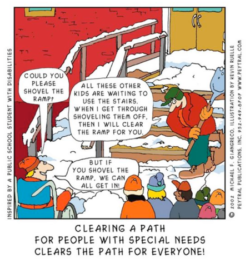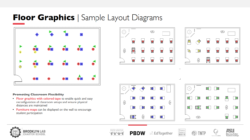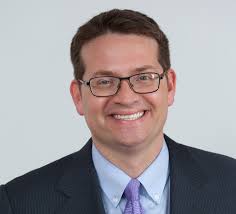This spring, Brooklyn Laboratory Charter Schools (Brooklyn Lab) launched a series of two-week design charettes to determine the school’s plans for reopening in the fall. The product of the second charette, the Brooklyn Laboratory Charter Schools’ Back to School Instructional Program Scheduling Map, is intended to help Brooklyn Lab and other school communities think about the who, what, when, where and how of instructional models this fall. We spoke to Eric Tucker, co-founder of Brooklyn Lab, to learn more about the Instructional Programs Scheduling Map and hear his recommendations for how other schools and school systems might consider adapting these proposals to their unique context. This interview has been edited for length and clarity.
EDUCATION FIRST: Before we talk about the Instructional Programs Scheduling Map, let’s talk about the unique needs of students with disabilities during this crisis. How are you thinking about the needs of these students as we get closer to the fall?
DR. TUCKER: This spring, the Educating All Learners Alliance did a lot of work investigating and documenting why leaving school was uniquely difficult for students with disabilities. All students need connections with peers, stable routines, and access to critical resources that matter, like food, counseling and physical activity. For students with disabilities, stability, continuing, and ritual are even more important, and those things disappeared during remote school. Moreover, a national, ongoing survey found that less than half of parents whose children live with disabilities had been contacted by their school this spring after their districts closed. A big part of our planning for the fall is addressing the unique needs of students with disabilities (including for relationship, routine and responsiveness) and recognizing that their needs have not been met over the past several months.
We cannot use a health crisis to abandon the civil rights of our most complex learners. The reality is that COVID-19 is unlikely to end anytime soon. For the next 18–24 months, medically-fragile students or students who have medically fragile family members may decide that home-based instruction is more appropriate, and there needs to be a strategy to provide distance instruction and support for those students.
When we began this process, we asked: What is our game plan for meeting the needs of students with disabilities and providing inclusive, legally compliant instruction that prioritizes the civil rights of young people? We also started thinking critically about the very real possibility that the coming school year will be defined by transitions between virtual instruction and in-person learning. This might happen for individual students, groups of students, or the entire school. For example: A family may need to take a voluntary 14-day quarantine that pulls their child out of school. That student may return from quarantine, but then the school might shut down in a rolling closure. It is important that we staff for and prepare students to transition effectively between those different states.
EDUCATION FIRST: What was the inspiration for creating something that would be of service beyond just Brooklyn Lab, and how did you get started planning?
DR. TUCKER: As a laboratory school, part of our purpose is to innovate—to reimagine education so that it reaches all learners, including complex learners such as students with disabilities, students who experience economic hardship at home, English language learners and BIPOC students. Equity in education is part of our mission, and innovation is our approach, so we wanted to create not just a plan but a model for the planning process that other schools could replicate to ensure equitable access to learning in their community.
We also recognized that the complexity of planning for reopening calls for a network approach; no one school is equipped to do this alone. Staffing for the fall is ten times as complicated as previous years, facilities management is ten times as complicated, and academics/instruction is also ten times as complicated, and so on. It is critical that we all learn with and from each other so we can move quickly. That’s why we decided to bring together people who had technical expertise with the explicit intention of being transparent and public about the constraints we were trying to navigate so that it would be helpful to others.
In terms of planning, we started thinking about fall reopening as early as April, and our planning has always been underpinned by the critical premise of keeping students, teachers, staff, and families safe and healthy. The events this year have challenged and undermined our sense of health and wellness, and we knew that if we didn’t prioritize plans for health and safety—including temperature checks, contact tracing and social distancing—that all of our plans for learning would be jeopardized.
Once planning was underway, we acknowledged that our plans needed to be more detailed and comprehensive than ever before. Before COVID-19, we didn’t need that level of precision. But now we really need to unpack the who, what, when, where and how of learning. It’s like planning the set and choreographing a very complex play: What spaces do we have? How many adults are in a room? What are their roles? How do they transition from space to space? How many desks are in the space? Which direction are they facing? We realized that we needed to plan for every component of the day—from the ratios of instructors, to the physical locations and spaces, to the methods of instructional delivery—in a very clear and tactical way.
EDUCATION FIRST: What did the charrette process look like and who was involved?
DR. TUCKER: The design charette had three phases: 1) discovering the dimensions of challenges, 2) creating content-expert teams to address each challenge, and 3) developing and refining solutions. Each of these content-expert teams worked on a defined question and presented their thinking to teachers, families and students on a daily basis. For any solution to be effective, it was critical to have the people who were going to be most impacted by the decisions deeply engaged in the design. We also invited a team of information designers who specialize in simplifying complex ideas to help us communicate ideas across teams and with the field.
One critical component of the process was embracing the humility that is necessary in this moment. We knew we needed to be vulnerable and transparent with our students, families and staff throughout our process, and, ultimately, that allowed us to get stronger answers more quickly. I worry that schools and school systems around the country feel apprehensive about the quality of their plans and, rather than being vulnerable and opening up space for feedback and input, they are hoping that some magic occurs between now and early August. In reality, there needs to be versioning and iteration. We cannot compromise one iota on the legal, health, safety and well-being priorities. But we need to embrace the fact that our answers in November will look different than our answers in August as we obtain more information, refine our procedures and widen the circle of developing solutions.
EDUCATION FIRST: What is your advice to the schools or school systems that want to adapt what you’ve learned and proposed, particularly those that may not already have a clear culture of feedback and transparency like Brooklyn Lab?
DR. TUCKER: We started with some fundamental premises that are relevant to every school system across the country.


EDUCATION FIRST: Looking to the rest of the summer and the fall, what comes next for Brooklyn Lab?
DR. TUCKER: Over the coming months, we are going to continue to engage in a design process that has students, parents, social workers, and others collaborating and iterating on plans for a healthy and safe return to school.
One of our biggest lessons from the spring is that there is so much complexity in the transitions between in-person and virtual environments. Our plan, as of now, is going to depend on success coaching. We will have one adult who owns the relationship with a scholar and is on deck for ensuring that that particular student has the support they need to navigate as everything changes. This is going to require that we rapidly upskill our teams over the summer to do that. We are also thinking about how we’re setting up caregivers and community educators to support the students they love to navigate and be successful this fall.
Finally, we’re currently working on a restoration solutions guide. What will we do if two or three students in a single homeroom test positive for COVID? How will we close school, clean and reopen? What if it is nine students across two grades and multiple homerooms? What if it is 50–70 students? Those are all very different operational decisions and we need to have plans for each of them. Those are just a couple of examples, but we’re going to continue to work on the areas that are most important for our community, and sharing what we learn along the way.
Brooklyn Lab is a founding member of the Educating All Learners Alliance, a coalition of organizations committed to supporting the efforts of the education community to meet the needs of students with disabilities during the COVID-19 pandemic.

